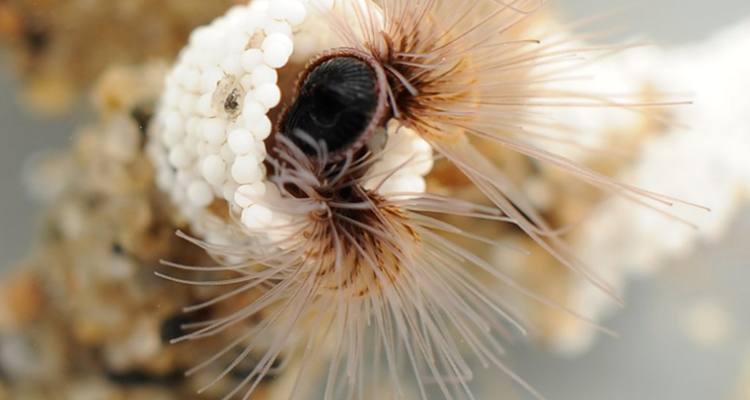
Project
REEFGLUE
REEFGLUE is a bio-inspired adhesive product to bind oyster shells together, promote settlement of oyster larvae and facilitate natural development of biogenic oyster reefs.
Internationally reef restoration is crucial to the recovery of both ecological habitat and fish nursery grounds. The flat oyster (Ostrea edulis) has been identified as a key species for the ecological recovery of the North Sea which also promotes local biodiversity. This biodiversity has rapidly deteriorated both locally and internationally over the past century due to overfishing and destructive bottom trawling. Reef associated species, including juvenile cod, have greatly declined and cannot recover without reef rehabilitation, for which large scale opportunities are seen within offshore windfarm (OWF) areas that could increase to 6600 km2 in 2050 as important pillar of the energy transition. The Dutch government aims to stimulate biodiversity development in OWF and requires since 2020 that owners of new OWF make efforts to develop underwater nature and may also actively introduce flat oysters or engage in other forms of nature construction.
The flat oyster (Ostrea edulis) once was an abundant key species in the North Sea that provided ecologically important reefs supporting biodiversity and productivity. These reefs have disappeared due to overfishing and destructive bottom trawling. Currently, pilots are being carried out in an effort to rehabilitate oyster reefs in especially offshore wind farms and other areas in the Dutch North Sea. Reintroduction of hard substrate is needed to kickstart oyster reef formation, and often concrete is used as easily available material for producing dedicated and robust structures. The use of concrete, however, is debated because of its high CO2 footprint and large amounts of fresh water and sand needed. For oyster larvae, wasted oyster shells are the ideal substrate for oyster larvae to settle. Individual shells, however, do not make a reef; they must be held together. Adhesive technology is infrequently used in wet environments as water is detrimental to the performance by promoting swelling of the material or weakening the contact with the adherend. The few available commercial products fail to meet the requirements needed to produce a healthy oyster shell reef basis: easy delivery, fast setting times, durability, low cost, and lack of toxicity. This need demands new adhesive design principles.
Marine sandcastle worms (as shown in the leading image) have solved these issues using proteinaceous complex coacervate glues to form extremely durable underwater structures built of glued sand grains. Inspired by these natural solutions, REEFGLUE aims to develop 1) a bio-inspired complex coacervated-based alternative for cement that binds oyster shells together and, upon immersion in the seawater, would create a high strength and long-lasting bond. The firmly connected shells could promote settlement of oyster larvae and facilitate natural development of biogenic oyster reefs. We hope to 2) produce different versions of this material, including based on more fine shells that will mimic the function of concrete for creating dedicated functional and interlocking structures that can support additional ecological functions such as shelter for young fish or lobsters. With coarser shells also ‘meat balls’ could be made as spat collectors that subsequently can be easily distributed over the new reef from a boat. In addition, recruitment can be stimulated by luring settling larvae to our reef structures by including natural chemical cues, colour and micro-structures into the substrates, that the larvae have shown to favour in behavioural experiments. The project is still in the development stages and we are looking for interested collaborators.
